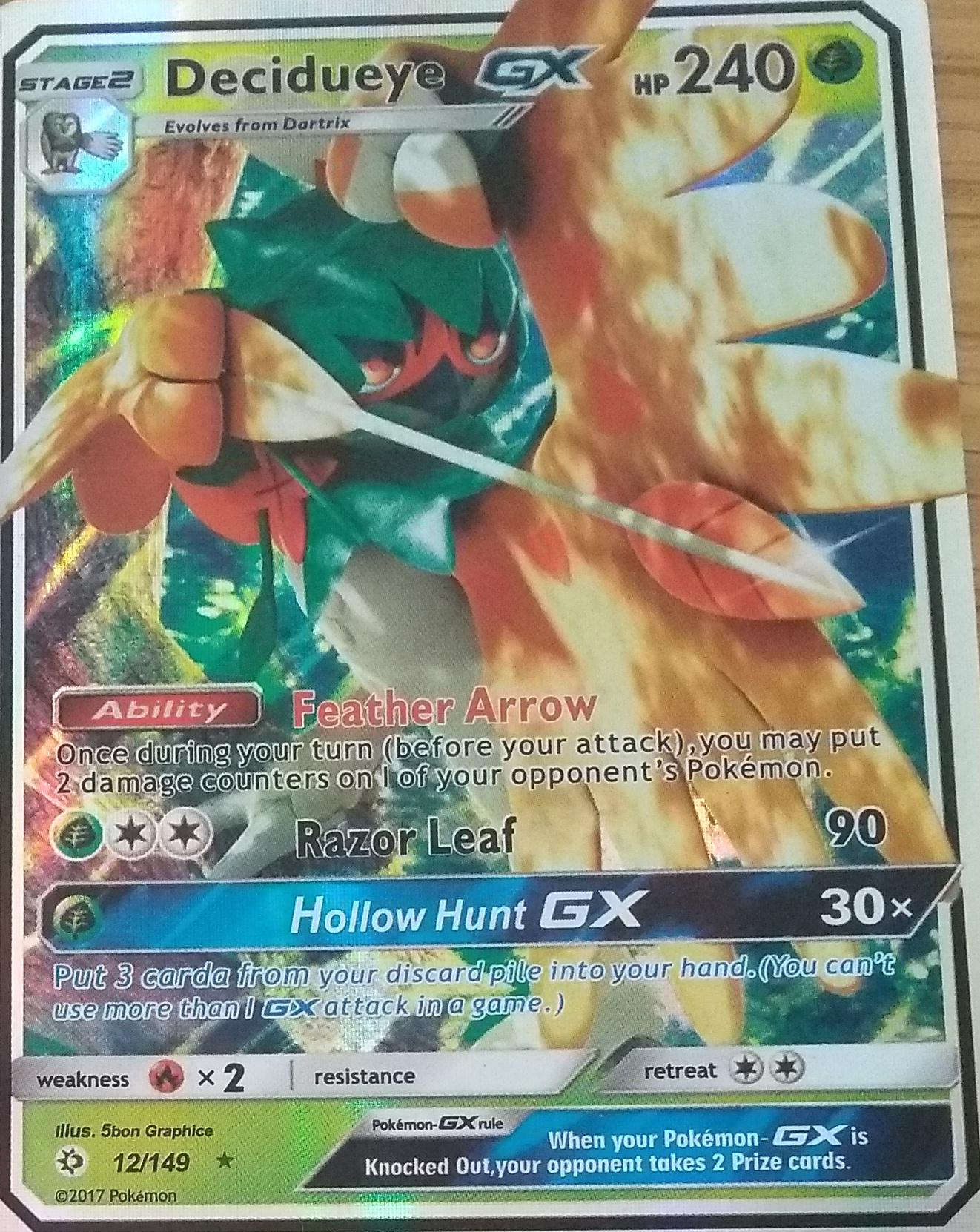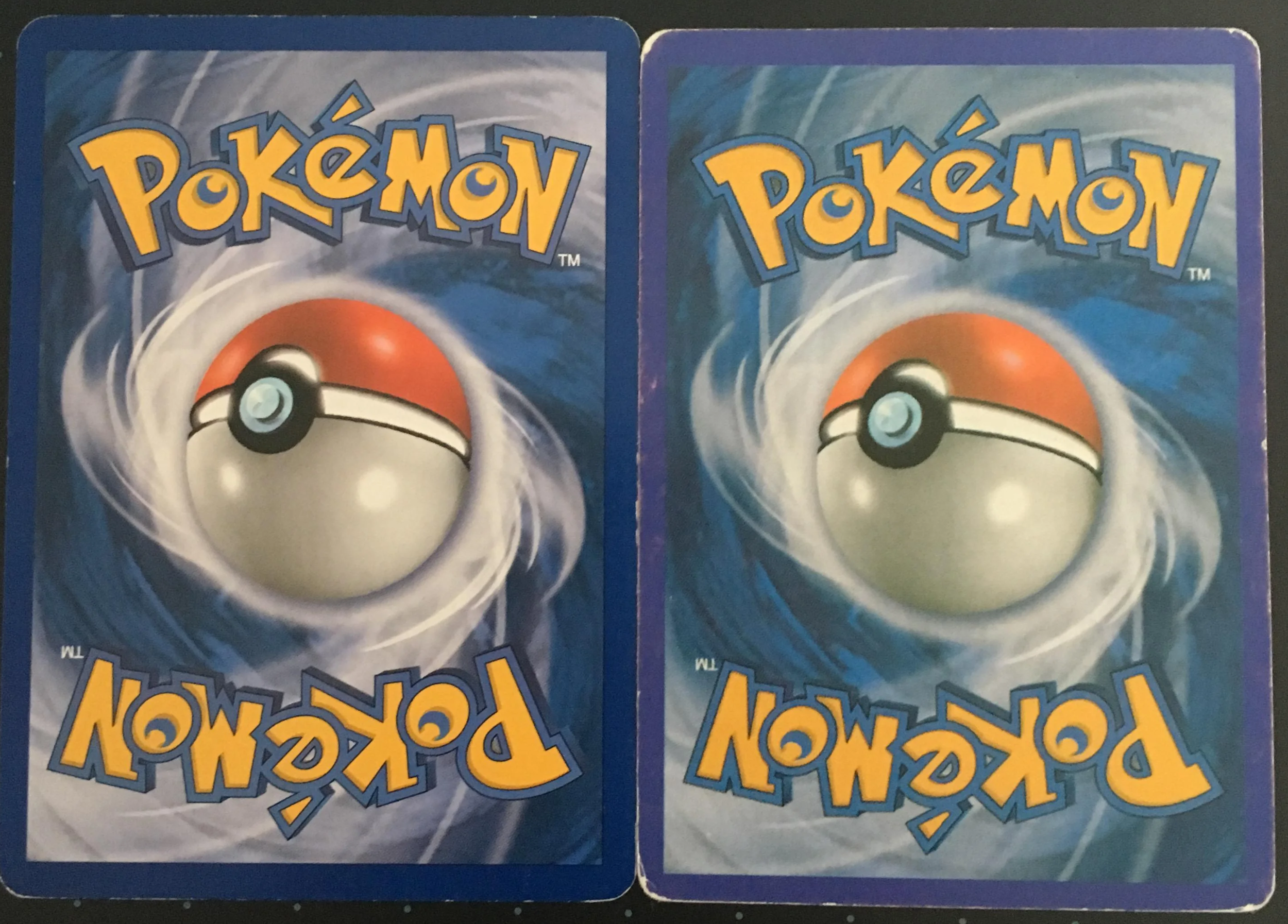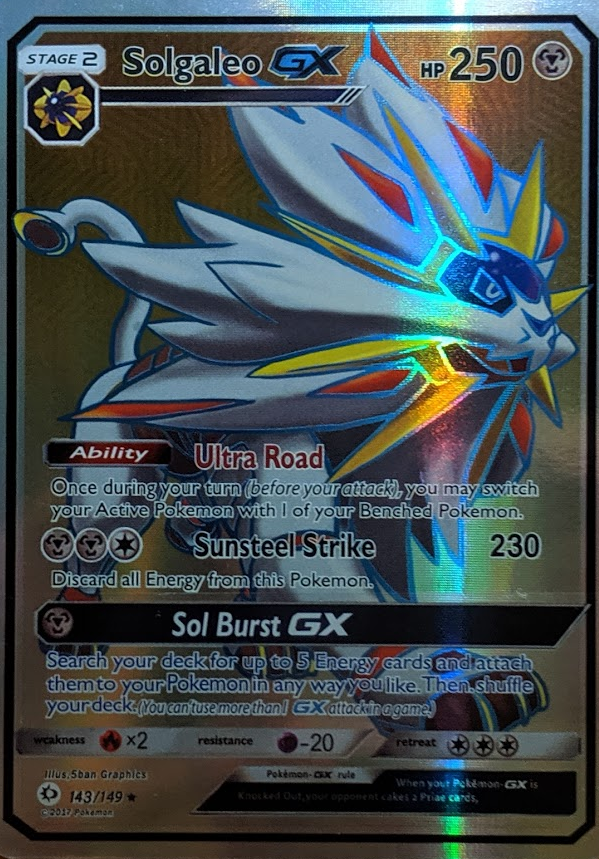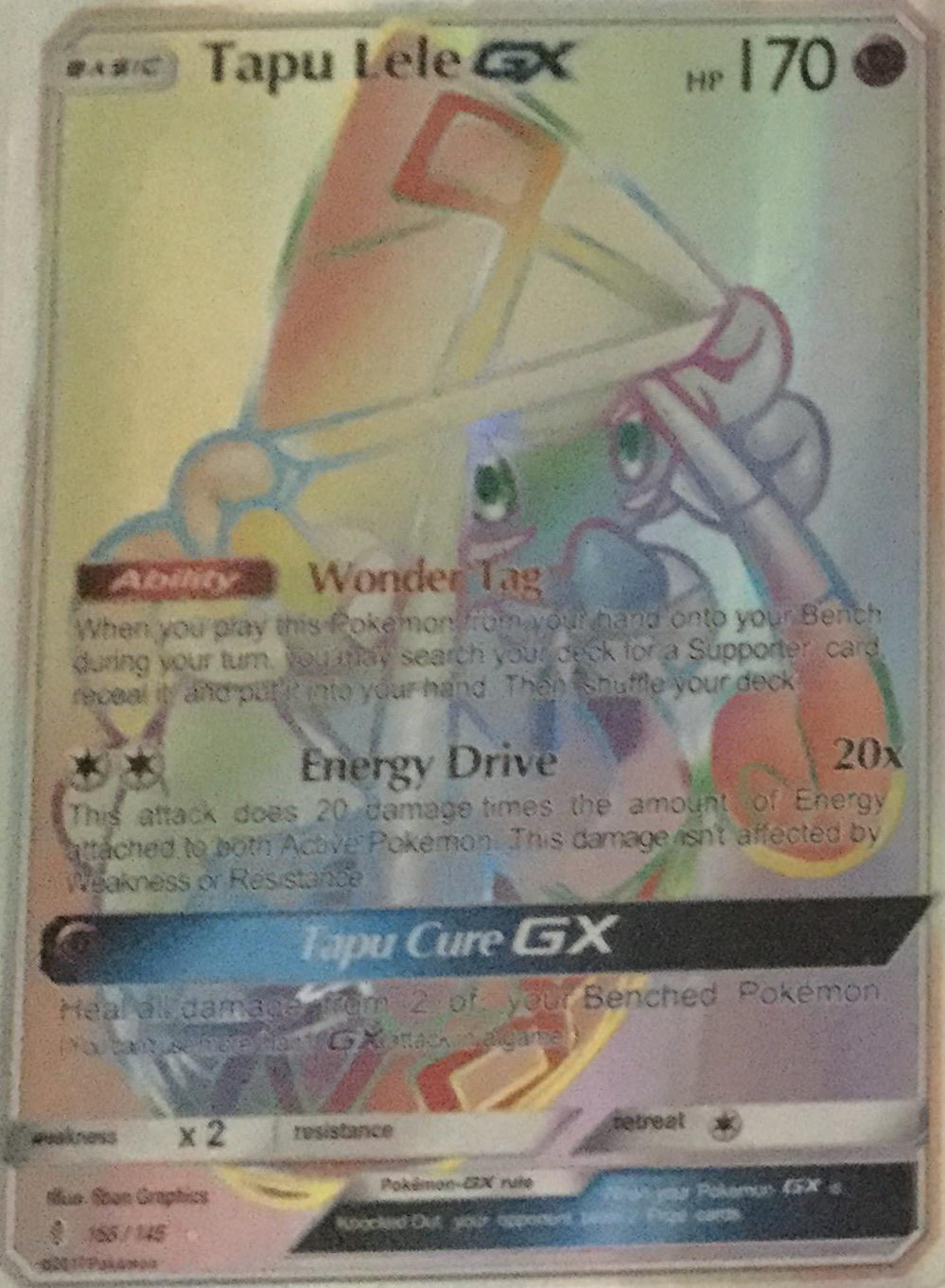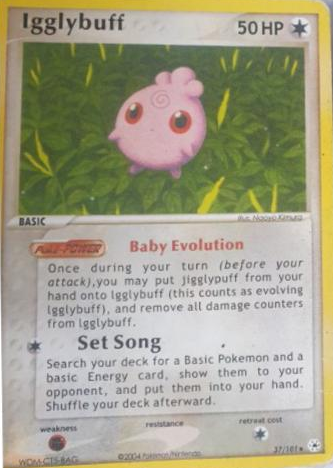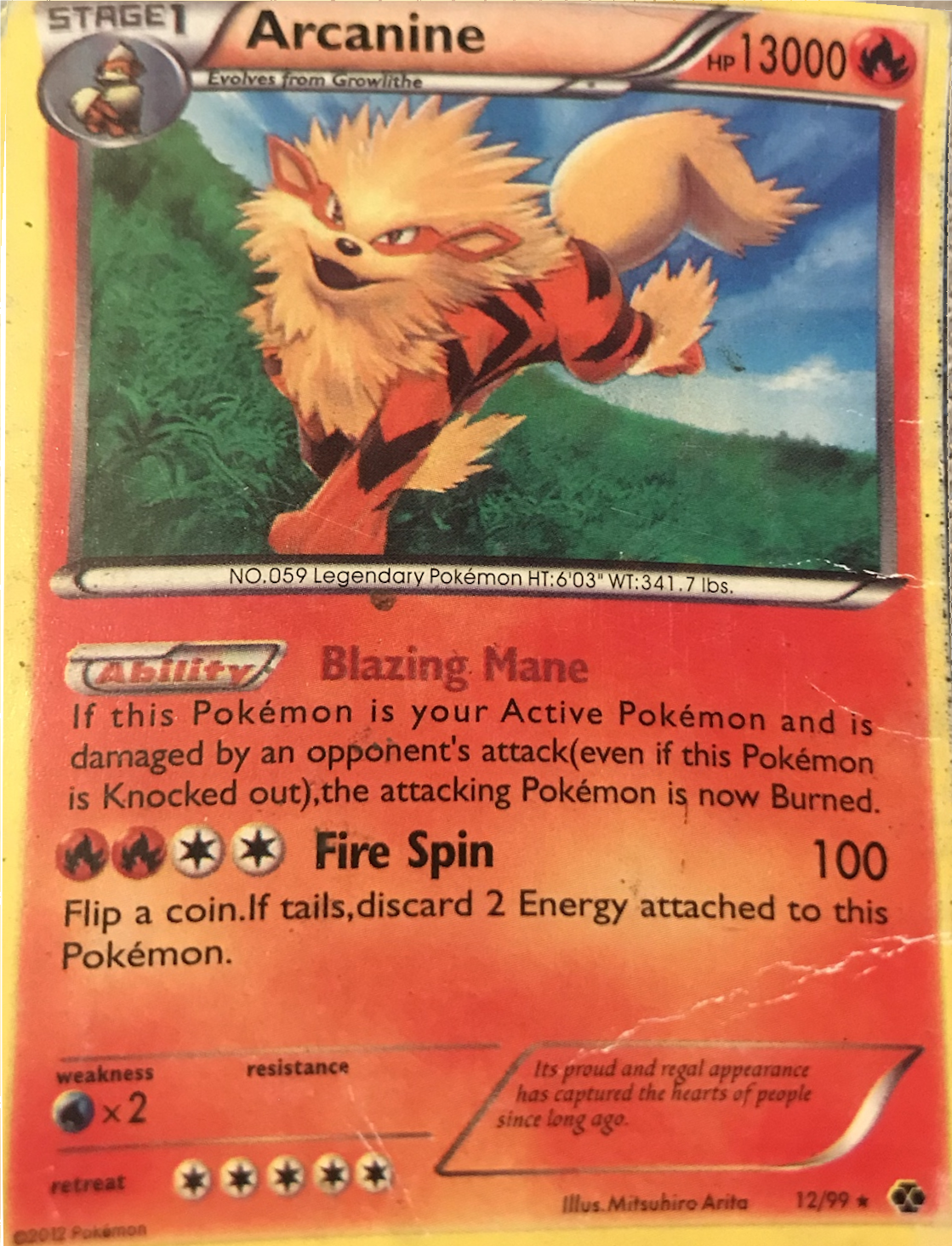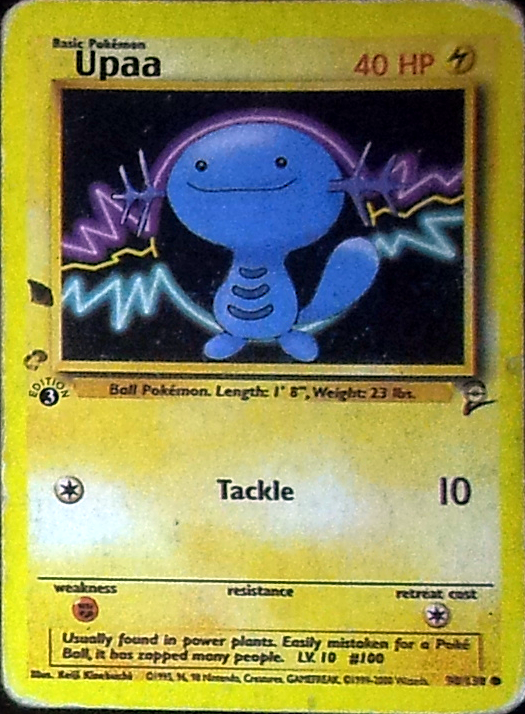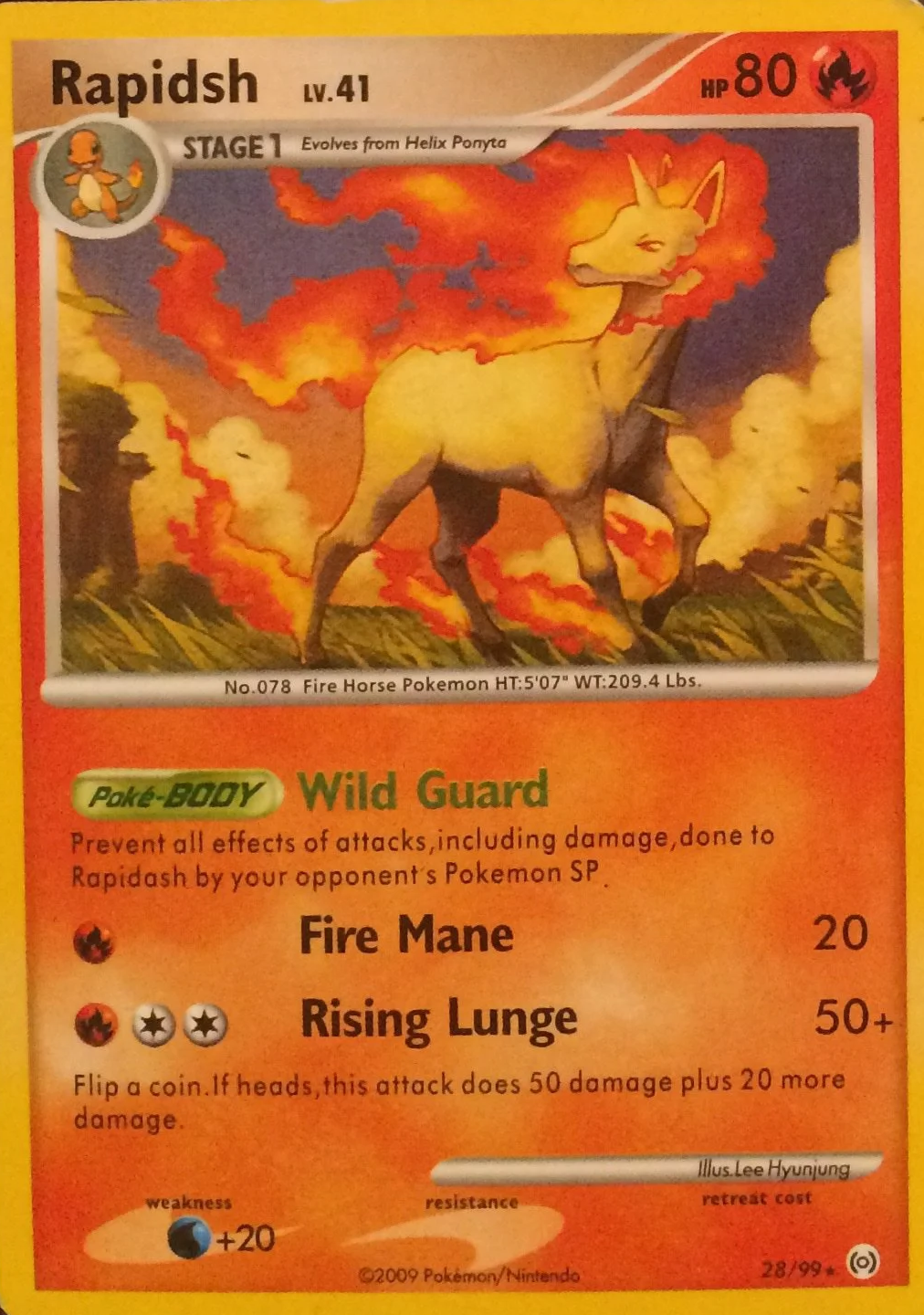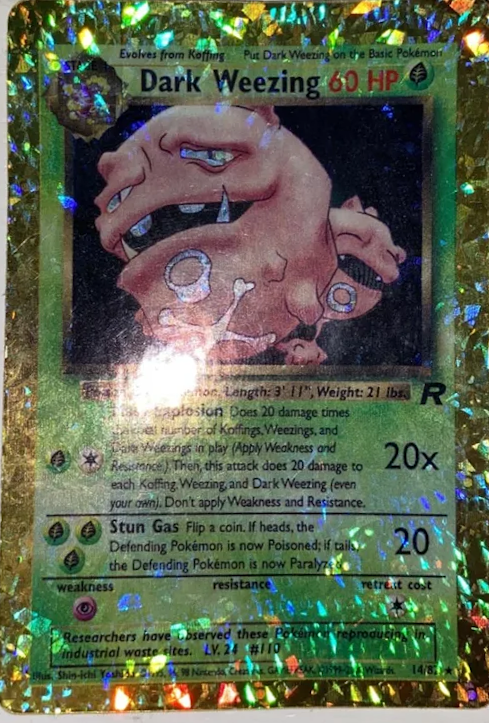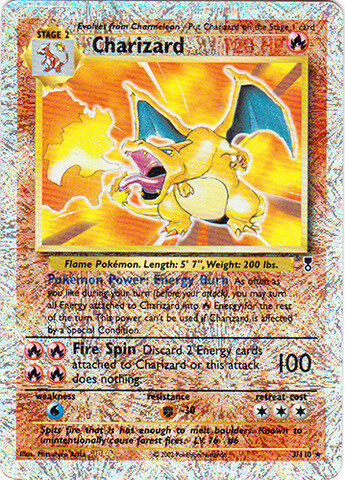Identifying Fake Pokémon Cards
While we certainly wish that every purchase we made online and in person were sure to result in authentic cards, there are many sellers of fake cards online—even on otherwise largely trustworthy sites like Amazon and eBay. The majority of the time, these fake cards are easy to spot—the creators of these fake cards just have to make them close enough and shiny enough that an unsuspecting parent will buy them for their child.
When buying cards, always be mindful of phrases like “flash cards” or “authentic reproduction” in the description of products you’re buying. If something looks too good to be true, it probably is. You aren’t going to be picking up a new, authentic and unopened booster box for $10 off of eBay, Woot, or the guy with the trench coat at the end of your block.
There are a number of things that help you distinguish a fake English Pokémon card from a real one. Below are the most common tells for spotting fake Pokémon cards.
The Feel of the Card
The feel of a fake Pokémon card is often the first thing that gives it away as being fake. Fake Pokémon cards tend to either feel especially papery or a bit plasticy because of the low-quality materials used in their creation. When holding a card that you believe may be a fake card, feel the surface of the card. Compare it with a card you know to be genuine. Does the card in question feel abnormally flimsy? Does the back of the card feel a bit slick, almost as if it were straight out a new deck of playing cards? Does the card stock feel thicker or rougher than you would expect, perhaps more like a piece of construction paper than the real card? If you answered “yes” to any of the questions above, you’ve likely got a fake card on your hands.
Colors, Print Quality, and The Back of the Card
In addition to how the card feels is how it looks. Fake cards are often poorly produced and tend to have a much lower print quality than a real card. Colors often come through as overly dark, blues will often become muted or even purplish, the print of the card itself may even look like it has an almost fabric-like pattern in it. Text and pictures may be somewhat blurry. Fake chase cards like full art trainers and EX, GX, and V/VMAX cards will often have a slightly reflective back in addition to their reflective fronts.
Compare the two backs of the cards (credit: Redditor /u/solocien)—you’ll note that the card on the right has a considerably lighter, almost purple-colored border. The colors on the card look washed out, as if not quite enough ink was applied to the card to complete the printing process.
The Decidueye-GX (credit: Redditor /u/grenlem), on the other hand, has an odd cloth-like pattern that runs through its entire print.
Pattern and Texture of Special Cards
In addition to poor color reproduction and otherwise bad print jobs, fake cards also tend to do a very poor job of mimicking the special holo and texture of the chase cards from the various sets in the Pokémon Trading Card Game. The worst fakes will print the texture that the card should have instead of reproducing it in the card-making process. And although it sounds odd to hear, fake Pokémon cards—especially chase cards from relatively recent sets—XY onward—tend to have a very simple almost flat holo to them. In short, they just don’t shine correctly. Sometimes, these fake chase cards will also have a brownish, yellowish, or orangish hue to them.
On the Solgaleo-GX (credit: Redditor /u/SmileyJetson), you can see the holo is there, but the texture in the card’s background is clearly not actually present on the card. It’s not affecting the holo’s reflection like it should because the pattern has been printed onto the card instead of being actually added to it.
The fake Tapu Lele-GX (credit: Redditor /u/ZevTaub) has no texture whatsoever—but a real copy of Tapu Lele-GX would have a detailed texture pattern all throughout its holo.
Spelling and Accents
As many producers of fake cards do not speak English as their first language—or at all—it is common to see misspellings, including transpositions of neighboring letters and using similar letters in place of one another. When considering whether a suspicious card is fake, examine the card carefully for misspellings.
For example, in the fake Wartortle, the Pokémon’s name is spelled incorrectly as Wartortleh, the word flip is spelled filp, and the word turn is spelled trun. Each of these errors are typos that would have been quite unlikely to make it very far in the production of a real card. Error cards do exist—Pokémon have even had their name spelled incorrectly on genuine cards—but errors of this nature are quite rare on genuine cards.
For a list of known error cards, see the article Error cards on Bulbapedia.
In addition to misspelling words on the card, another common sign of a fake card is missing the acute accent on the é in Pokémon in various places on the card—in the evolution text “Place Kirlia on the Basic Pokemon,” the Pokédex-like informational text, in the attack text, and, most often, in the copyright section at the bottom of the card. An otherwise relatively convincing fake may give itself away by simply omitting one of these accents.
Credit: reddit user /u/domvinr
Kerning and Font
Another telltale sign you’ve got a fake card is the kerning of the text on the card. Kerning is the spacing between each letter in the text of the card. You’ll often find that the kerning on fake Pokémon cards is abnormally large and is usually inconsistent. There will be segments of text that appear almost normal—and segments of text with abnormally large gaps between the letters.
In addition to odd kerning, fake cards often use the wrong typeface (or font) for their text. This will mean that the letters on the card won’t look quite like they’re supposed to. Perhaps a v on the fake card is a little thicker on the left side than on the real card. Maybe a g, y, or j reaches down further than it should. When you’ve seen many Pokémon cards, these incorrect typefaces will stick out immediately when looking at a fake card.
If you aren’t certain about a card, you can always check the kerning and typeface of the card in question against that of the real card—like the fake Igglybuff on the left and real Igglybuff on the right (fake Igglybuff credit: Redditor /u/Riezenberg). A pair of helpful databases that can be used for this purpose are the official Pokémon Trading Card Game Card Database and PkmnCards.com.
Energy Symbols
Credit: reddit user /u/kenxocd
Credit: reddit user /u/lewif0x
The energy symbols in the Pokémon’s typing at the top of the card, in the Pokémon’s attacks’ costs, and in the Weakness, Resistance, and Retreat Cost parts of the card are often misaligned, misshapen, incorrectly sized, or missing completely.
In the Kangaskhan example above, the Colorless type symbol, the star, is far off center in its orb. In the Vespiquen example, the Grass type symbol, the leaf, is too narrow, and the colorless energy symbols in its retreat cost look as though they’ve been taken from another portion of some other card.
If your Pokémon has a single blank, cloudy orb instead of an orb with a type symbol in it for the energy cost of its attack, it may be the symbol indicating that the attack has no cost, like Alolan Vulpix’s Beacon attack.
Crazy Stats - Big HP, Big Damage
Like The Pokémon Company, many producers of fake Pokémon cards understand the appeal of large numbers on the cards to children and will sometimes change the HP or the damage done by a Pokémon’s attack in an effort to make their fake cards more desirable to kids. If my Arcanine has 13000 HP, it’s clearly better than your Arcanine that only has 130—and that means I win in in our playground battle. Of course, that crazy HP also means the card is crazy fake.
It’s true that power creep can make the game feel like the HP of Pokémon is getting just too high in general, and you may suspect that the high HP on the Pokémon on the card you’re concerned about is just a result of power creep. You can always check the HP of your card against the real card—like the fake and real Arcanine on the right. A pair of helpful databases that can be used for this purpose are the official Pokémon Trading Card Game Card Database and PkmnCards.com.
Credit: reddit user /u/ParkCityFIFA
Rock, Paper, Fakes
For some reason, a number of recent fakes have started including a set of various hand gestures somewhat resembling Rock, Paper, Scissors in a bubble on the card, as if trying to create some sort of sub-game that you’d play instead of the actual game the cards were designed for.
If your card contains any of these hand gestures, like the open palm pictured on the Slurpuff, the card is a guaranteed fake. There are no genuine Pokémon cards with these gestures on them.
Credit: reddit user /u/spectre308
Laziness
Numerous signs of a fake card stem from laziness on the part of the producers of the fake. Errors like Pokémon evolving from the wrong Pokémon, Pokémon with incorrect typings, Japanese set markers instead of the international set symbols, and other omissions make a fake card stand out.
In the examples below, a picture of Wooper has been slapped on Voltorb’s Base Set 2 card, with Voltorb cut out of the image. The fake card has one of Voltorb’s Pokédex entries instead one of Wooper’s, “Wooper” is misspelled as “Upaa,” and a non-existent “Edition 3” stamp appears where a 1st Edition Stamp could have been.
On the fake Rapidash card, Rapidash is misspelled as Rapidsh, but also somehow inexplicably evolves from a Helix Ponyta that looks a rather lot like a Charmander. Weezing, on the other hand, has the wrong name entirely—Nidoking.
Size
This seems like the easiest thing for the producers of fake cards to get right, but it’s not uncommon for fake cards to be slightly smaller than their authentic counterparts. When checking the size of the card, compare it with a known real card, like a basic energy card. First, place the card in question on top of the known good card. Is the real card taller? wider? Now flip the two cards, putting the real card in front of the card in question. Is the known real card shorter or wider? If there’s any difference in size between the two cards, it’s pretty safe to say that the card in question is fake, though it’s not a guarantee.
There are exceptions, however! Jumbo-sized cards and box topper cards also exist, though they are not as commonly collected as the normal deck-sized cards. Comparatively few of these alternatively-sized cards are made in comparison to the regular deck-sized cards, but it’s important to be aware of these cards. They may not be legal for play, but they are often quite cool to look at!
Stickers
Some fake Pokémon cards aren’t cards at all, but stickers! These are usually unauthorized stickers made to look mostly like a real card. Generally, these stickers will be a bit smaller than a real card and will often have a vibrant holo pattern that covers the entire surface of the card, like the pictured Dark Weezing.
Don’t confuse these stickers with reverse holofoil cards from the Legendary Collection set, however. Cards in the Legendary Collection, like the Charizard on the right, have a very lively—almost noisy—holo pattern, too! These cards will all have the same set symbol as Charizard, as the Legendary Collection was the first set to contain reverse holofoils and the last to include a reverse holofoil pattern like it.
Packaging
The packaging your cards came in can also be a big indicator that your cards are genuine or fake. Often, producers of fake Pokémon Trading Card Game merchandise won’t even try to clone the authentic packaging and will instead resort to creating their own. Fakes like these sometimes will use the “Pokémon GO” branding instead of the actual Pokémon Trading Card Game branding or will try to somehow merge the two into something else entirely. Boxes full of “GXes”, “EXes”, or other chase cards are guaranteed to be fake, too—and if the packs from the cheap booster box you’re cracking are full of tons of special GXes, EXes, Megas and you just can’t believe your luck—you shouldn’t. You’re ripping into a counterfeit product.
A Last Resort - The Rip Test
The very last resort is the rip test. Especially if your card came with a lot of other cards, it’s possible to tear the card—or a cheap card that came along with it, like a common card or a basic energy card—and look to see if the card is authentic. A real card is a sandwich of layers—with an opaque middle layer being dark grey or black compared to the rest of the paper used for the card. If this layer is present, the card is authentic. Sometimes, it may be possible to see this layer in the card without tearing it—though if you can see it, the card may already be somewhat damaged.
In this video by Mavin, you can see that the Electabuzz from Evolutions torn was indeed a real card—its dark middle layer is present.

